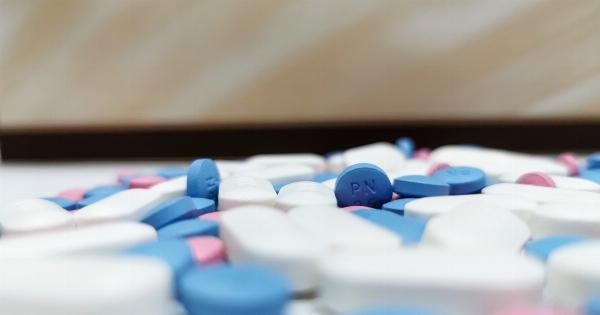Sleep is a vital part of our daily routine, allowing our bodies and minds to rejuvenate and recharge. However, an estimated 50 to 70 million Americans suffer from sleep disorders, which can have detrimental effects on overall health and well-being.
In recent years, there has been a growing body of research exploring the link between sleep disorders and various health conditions, including stroke.
The Link Between Sleep Disorders and Stroke
Stroke, a leading cause of death and disability worldwide, occurs when there is a disruption in blood supply to the brain. It can result from a blockage in a blood vessel (ischemic stroke) or bleeding in the brain (hemorrhagic stroke).
While traditional risk factors for stroke, such as high blood pressure, diabetes, and smoking, are well-known, emerging evidence suggests that sleep disorders may also play a significant role.
1. Sleep Apnea: One of the most common sleep disorders is sleep apnea, characterized by repetitive pauses in breathing during sleep. This condition leads to low oxygen levels and frequent awakenings throughout the night.
Sleep apnea has been identified as a potential risk factor for stroke, as the decreased oxygen flow can damage the blood vessels and increase inflammation.
2. Insomnia: Insomnia, the inability to fall asleep or stay asleep, affects millions of individuals worldwide. Chronic insomnia has been associated with an increased risk of stroke and other cardiovascular diseases.
Researchers believe that the constant state of hyperarousal and sleep deprivation associated with insomnia can contribute to the development of stroke risk factors such as hypertension and diabetes.
3. Restless Legs Syndrome (RLS) and Periodic Limb Movement Disorder (PLMD): These sleep disorders are characterized by uncomfortable sensations in the legs and an irresistible urge to move them, leading to disrupted sleep patterns.
Although the direct link between RLS, PLMD, and stroke is not fully understood, some studies suggest that the arousal and sympathetic activation associated with these disorders may contribute to an increased risk of cardiovascular events, including stroke.
Understanding the Mechanisms
While the exact mechanisms underlying the relationship between sleep disorders and stroke are still being investigated, several potential pathways have been proposed:.
1. Hypertension: Sleep disorders, particularly sleep apnea, can lead to the development or worsening of hypertension (high blood pressure).
Hypertension is a major risk factor for stroke, as it damages the blood vessels and can lead to the formation of blood clots or the rupture of blood vessels.
2. Inflammation and Oxidative Stress: Sleep disorders are associated with increased levels of inflammation and oxidative stress in the body.
These processes can contribute to the development and progression of atherosclerosis (the buildup of plaque in the arteries) and other cardiovascular diseases, including stroke.
3. Disrupted Sleep-Wake Cycle: Sleep disorders disrupt the natural sleep-wake cycle, leading to chronic sleep deprivation and alterations in hormonal regulation.
These disruptions can negatively impact various physiological processes, including blood pressure regulation, glucose metabolism, and immune function, which are all important in maintaining cardiovascular health.
Identifying and Managing Sleep Disorders to Reduce Stroke Risk
Recognizing and addressing sleep disorders can be crucial in reducing the risk of stroke and other associated health conditions. Here are some strategies to consider:.
1. Sleep Study: If you suspect that you may have a sleep disorder, it is important to consult with a healthcare professional who can recommend a sleep study.
A sleep study involves monitoring your sleep patterns, breathing, and other physiological parameters during a night of sleep in a specialized sleep center.
2. Continuous Positive Airway Pressure (CPAP) Therapy: CPAP therapy is the most common treatment for sleep apnea.
It involves wearing a mask over the nose or mouth that delivers a continuous flow of air to keep the airways open during sleep. By improving breathing and oxygen flow, CPAP therapy can help reduce the risk of stroke associated with sleep apnea.
3. Behavioral Changes: Adopting healthy sleep habits, such as maintaining a regular sleep schedule, creating a relaxing sleep environment, and avoiding caffeine and electronic devices before bedtime, can greatly improve sleep quality.
Additionally, managing stress through relaxation techniques or therapy may also be beneficial for reducing the risk of sleep disorders and stroke.
4. Medications and Therapy: In some cases, medications or therapy may be prescribed to manage sleep disorders.
For instance, medications such as hypnotics may help individuals with insomnia, while dopamine agonists or opioids may be used to alleviate symptoms of RLS and PLMD. However, these should always be used under the guidance of a healthcare professional.
5. Lifestyle Modifications: Making healthy lifestyle choices can significantly reduce the risk of stroke and sleep disorders.
This includes engaging in regular exercise, maintaining a balanced diet, avoiding tobacco and excessive alcohol consumption, and managing underlying medical conditions such as hypertension and diabetes.
Conclusion
Sleep disorders can have profound effects on overall health, including an increased risk of stroke. Understanding the link between sleep disorders and stroke is essential for early identification, prevention, and management of potential risk factors.
By recognizing the signs of sleep disorders and seeking proper treatment, individuals can significantly reduce their stroke risk and improve their overall well-being.





























